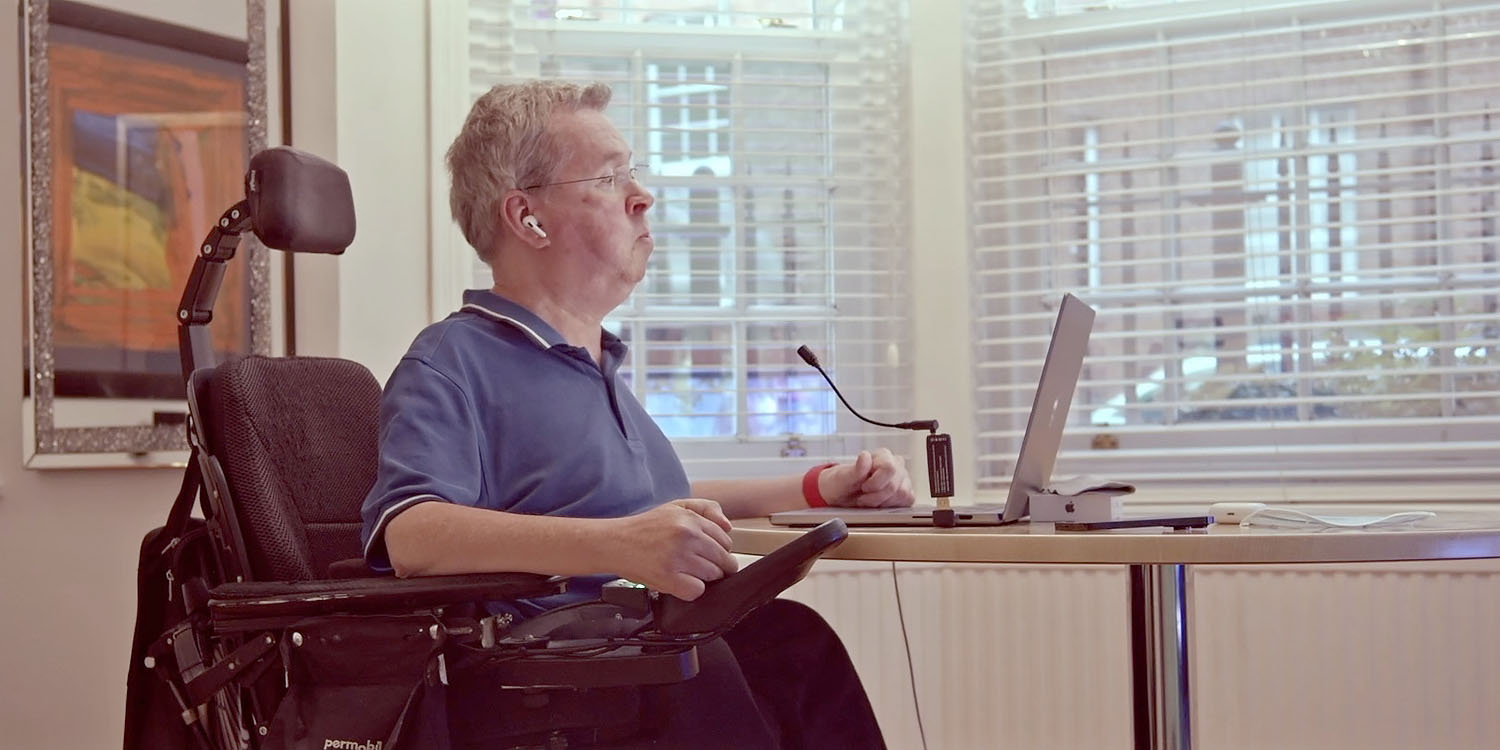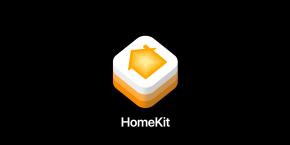
For severely disabled people, it’s no exaggeration to say that Apple Accessibility transforms lives – but it can be difficult to appreciate the impact that even minor-sounding changes can make until you see it for yourself.
Colin Hughes is a former TV producer and now disability campaigner who kindly showed me around his home to see how he uses both Accessibility features and HomeKit control to maximize the independence he retains over his daily life …
HomeKit can also be an Accessibility feature
A point often made about Accessibility features is that they can also benefit others, not just the intended users.
For example, closed captions on videos were initially designed for people who are deaf or hard of hearing, but now many people like to use captions – whether it’s to help with accents, or simply to be able to watch shows with the sound off.
Automatic doors were first intended for use by those who use wheelchairs and crutches, but now also benefit shoppers who have their hands full.
Screen readers were intended to help blind and visually impaired people, but things like having incoming messages read to us when we’re driving has been a big benefit to many.
The same is true in reverse of smart home tech. While this may be aimed at those who want a futuristic home, the technology also helps those with disabilities do everyday things like switch on kettles or write emails.
Hughes’ apartment has some bespoke devices – like a Siri-controlled front door opener – but most of it is simply taking advantage of standard Apple Accessibility features, and ordinary smart home products.
Independence is all
One of the greatest frustrations for people with disabilities is how they can be left dependent on other people to do everyday things. For Hughes, the best thing about Accessibility and HomeKit is the independence it gives him.
There are still some areas in life where he needs help, like getting out of bed in the morning, but the thing which really stands out from the day-in-the-life video below is just how much freedom he has to take charge of his own day.
A day in the life
The video below illustrates a typical day in Hughes’ life, and all the roles played by Accessibility features and smart home kit. Colin also explains just what a difference these things make to his life.
(To prevent unwanted Siri activations on your devices, I have cut out the “Hey Siri” part of all voice commands.)
It’s the little things
Sometimes it can be the smallest things that make the difference. For example, we’ve long been able to ask Siri to place a phone call, but there was no way to ask Siri to hang up. That left Hughes dependent on the person on the other end of the call to do so – or left him stuck after leaving a voicemail.
That’s something Apple fixed in iOS 16 – and it meant a huge amount.
I’m not one for public displays of emotion, but being able to hang up my own phone calls on my iPhone for the first time ever, hands-free, with just my voice, was a special moment! Lump in the throat, a well up in the eyes moment!
The sheer relief of finally being able to do what so many people take for granted was a special moment I won’t forget.
No more stuck in people’s voicemail boxes waiting for it to time out, powerless to do anything. Easy to dismiss pesky unwanted cold callers too, and if Siri calls the wrong person by mistake, I can now stop the call in its tracks.
It’s finally here and it’s life changing, and magical!
Much as it means to him, Hughes again makes the point that this isn’t just about people with disabilities.
It is a very inclusive feature and should be useful for anyone who has their hands full. For example, washing up and not wanting to touch your phone screen with wet or dirty hands. It’s good to see Apple is planning on moving the feature from the accessibility settings to the Siri settings in the near future. This move builds on the inclusiveness of Apple’s approach.
Similarly, the iPhone could offer call auto-answer – but you couldn’t toggle this on and off via Siri. Again, iOS 16 fixes this.
Finally, the ability to have notifications announced without the need for AirPods made a big difference.
It has also been really good to see Apple extend announce notifications, where messages get read out automatically as they come in, and you are able to act on them with just your voice.
Previously this feature was only available if you were wearing the company’s AirPods but now it will work on the iPhone speaker, which is really helpful when the iPhone is sat on my desk next to my MacBook.
Hughes praised Apple for listening to what he and others have requested.
It’s been a stellar year for accessibility and Apple technology, particularly for those of us who need voice enhancements. Apple has clearly been listening to what disabled users have been saying, and that’s great to see.
These three updates may not seem a lot to some people, but they add up to a lot in my day-to-day life, and the ease and independence they offer cannot be overemphasised.
I’d like to thank Andy Kimpton-Nye for the outside footage, Michael W Smith II for color grading, and of course Colin Hughes for all his input and assistance. For anyone looking to replicate Colin’s setup, you can find details below.
Apple devices
1) iPhone 14 Pro
2) iPhone X
3) Apple Watch Ultra
4) AirPods Pro 2
5) Powerbeats Pro
6) HomePod Mini x 2
7) AirPort Express for music streaming through an old Bose Lifestyle 30
8) MacBook Pro M 1 16 inch 32 GB RAM 2 TB SSD
9) Intel MacBook Pro 2015
iOS and macOS apps
1) Voice Control on MacBook Pro
2) Siri on MacBook Pro, iPhone and Watch
3) Siri Shortcuts on iPhone, MacBook and Watch
4) Broadlink on iPhone and MacBook to control Samsung and LG TVs and Sky Q
5) IFTTT in conjunction with Shortcuts to control Somfy TaHoma blinds
6) Philips Hue for lights (and with HomeKit)
7) Honeywell Home thermostat app with HomeKit
8) eWelink app to control front door with iPhone and Watch with Sonoff switch
9) Smarter app for kettle
10) IFTTT app
11) Parallels on MacBook Pro for longer more serious dictation with the Dragon Professional product for Windows
12) Philips Hue motion sensors for HomeKit automations.
Non Apple hardware
1) Philips Hue lighting
2) Niko smart wall switches (UK only, but alternatives available)
3) Honeywell Lyric wireless thermostat
4) Smarter iKettle
5) Broadlink RM4 and Harmony hub for TVs and Sky Q control
6) Meross HomeKit smart plugs
7) Sonoff WiFi module switch to open flat door
8) KeyboardMike by SpeechWare for maximum accuracy when dictating
FTC: We use income earning auto affiliate links. More.





Comments